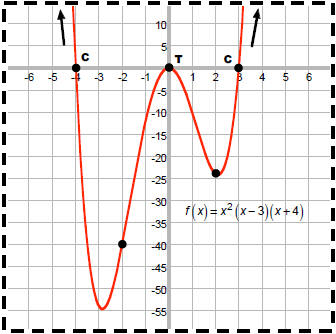Describe what limit notation for horizontal asymptotes actually means.
Don't tell me what to do! Limit notation for horizontal asymptotes looks like this:
as x --> infinity, f(x) -->__
as x --> -infinity, f(x) -->__
In the case of that graph above, that line next to the arrow would be 0. This means that as a graph goes to the right, it will approach but not touch that number for a y-value and it would mean the same for when it goes to the left. The limit notation for horizontal asymptotes is just a fancy mathematical way of saying what boundaries a graph has like a soccer player cannot go out of bounds if he wants to keep possession of the ball.




.JPG)




